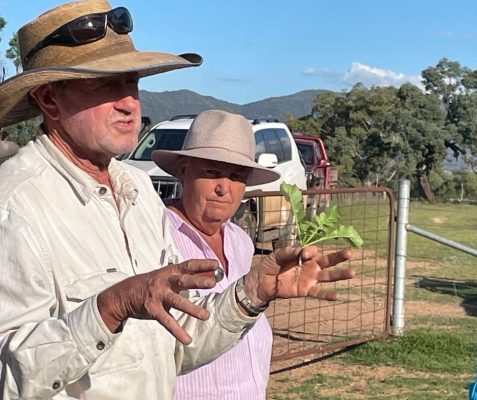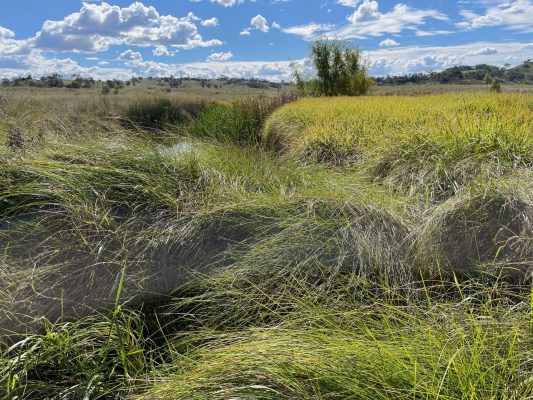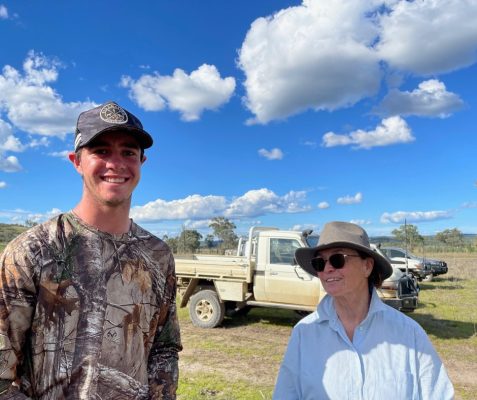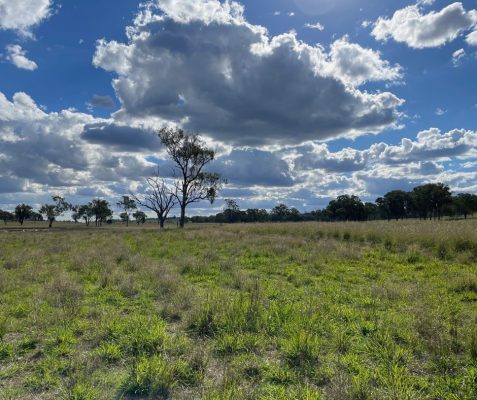Tropical pastures, farm biodiversity, landscape rehydration techniques and soil health were just some of the topics discussed during a recent farm tour.
Sixteen graziers from around Bingara, Barraba and Copeton visited two local properties, Mitiamo and Glenall. The event was organised by Janelle Schafer, a Bingara-based Extension Officer with the Southern Queensland and Northern NSW Drought Innovation Hub.
She said the group was excited to hear about the Mack family’s success in sowing their tropical grasses directly into the native grasses.
“A good cover of tropicals, with a biodiverse planting of legumes in the winter, has been achieved across most of the property,” Janelle said.


“The native grasses provide the fodder during winter. The legumes include clovers, lucerne, vetch and other winter active species.
“There has also been an active program of fencing around root balls of trees, which are the young of some trees that died during the mammoth 2017-2019 drought. They also have planted and fenced more trees. All dead trees are left standing for habitat for birds and other creatures.”


Managing water flow
Will and Lindy Cannington showed the group around Glenall in the afternoon. They have added some leaky weirs and swales as part of a landscape rehydration project they are undertaking to keep water in the landscape.
Janelle said the aim of the project was to lower the peak and flatten it during times of high water flow.
“Instead of all the water flowing off the property at once, it flows off slowly. Due to good ground cover, the water flows off the hills clear,” she said.
“They have also significantly reduced sodium in their sodic soils by using microbiological sprays. They also improve their soils in the old farming paddocks by growing rye, oats and Buster radish and adding soil microbiological sprays.


Building healthy soils
“Liz McDonald, senior agronomist from Australian Soil Planners, spoke about soil profiles. Will dug up a spade of soil, and we could smell the difference in the different soils that had had this treatment for one year or for three years.
“Will also showed us where he had been able to flood some low-lying paddocks that were sodic. He had dug a few exit points in the side of an old soil drainage bank to allow fresh water to flood the sodic field in times of high flow.”


Young farmer James Stace, who attended the farm tour, said it was very informative to observe the different techniques being used on the properties.
“I enjoyed seeing how both farms had success planting tropical grasses in different contexts, and with different methods,” he said.

